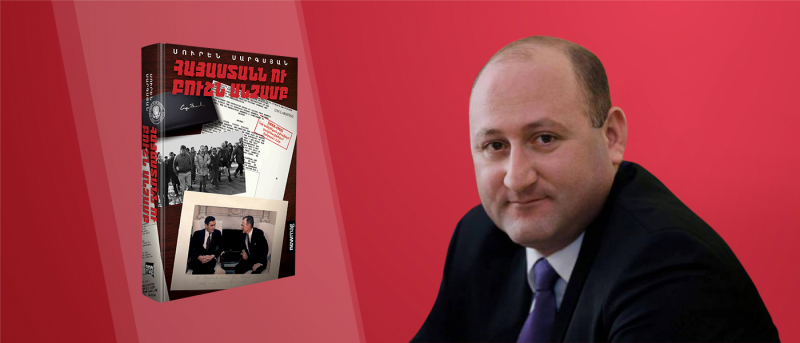[New Book] Book Presentation of Suren Sargsyan’s “Armenia and Bush Himself” Book will take place during the Newmag Winter Fest (trailer in Armenian)

What were some of the most exceptional events, historical meetings, fundamental decisions and speeches that took place in the Armenian-American relations in 1988-1992? What documents have been signed, what were some of the most decisive events of those ye
The author of the “Armenia and Bush Himself” book is Suren Sargsyan. He is a scholar and political scientist concentrated on American studies. Suren Sargsyan picked the period from 1988-1992, because those years were the most fruitful and crucial years in the Armenian-American diplomatic relations. The work summarizes declassified State Department documents, which are related to those 4 years. The documents shed light on the establishment of RA-US relations, the first interactions, revealing unknown details.
The book also refers to the rapid international and regional developments that took place in those years, which directly affected the Armenian-American relations and still continue. The book examines declassified documents detailing what high-ranking Armenian-American officials discussed in their first meetings, how they envisioned the new post-Soviet world order, what they wanted from each other, and how they formed further relations.
The political scientist presents the above-mentioned period and the Armenian-American relations in the context of 3 crucial and decisive events: the 1988 earthquake, the declaration of Armenia's independence and the Karabakh war. In those years, US foreign policy was aimed at mitigating the effects of the collapse of the USSR. The author also touches upon the question on what political line Washington took in its relations with Armenia and why the normalization of the Armenian-Turkish relations was essential for the United States. The book also presents the conversations and views of high-ranking Armenian-American officials on the Karabakh conflict, which have never been published before.
According to Suren Sargsyan's analysis, the first foundations of the political relations between the two countries were laid by the 41st President of the United States. The policies adopted by George H. W. Bush administration has had a major impact on the newly independent Armenia. “When Bush was elected as the 41st president, the United States and the USSR were historically at the most active and probably warmest stage of relations, if we skip their cooperation in World War II. Having served as Vice President for the past eight years and being considered Reagan's successor, Bush has been actively involved in those close contacts.”
The book's historical and diplomatic facts are supplemented by photos and archival documents. One of them, for example, are the pictures and interviews of Bush's son and grandson, who arrived in Armenia after the 1988 earthquake. “During a meeting with students at the University of Texas on May 12, 1989, Bush spoke about Armenia. "The bitter truth is that nothing makes us recognize our common humanity faster than a natural disaster. Of course, I am thinking about what happened in Soviet Armenia a few months ago, a catastrophe for which you can not blame anyone. War devastations without war. Our son took our 12-year-old grandson to Yerevan. After consoling the victims and comforting the mourners, the father and son went to church, sat together in the middle of the devastation and cried. How can our two countries increase this simple expression of care? How can we convey the good will of our people?””
In addition to the earthquake and the Armenian-Azerbaijani clashes, the political scientist also presented the historic and important visits that took place between the two countries at a high level. Levon Ter-Petrosyan's visit to the United States, the establishment of Armenian-American diplomatic relations, George H. W. Bush's recognition of Armenia's independence, Gorbachev's visit to New York. These events have hardly been subjected to political analysis for decades. Meanwhile, according to the political scientist, the agenda formed by the Bush administration in the early 1990s was so fundamental that it still remains in the American regional political priorities.
The book presentation of Suren Sargsyan’s “Armenia and Bush Himself” book will take place on February 19th at the Congress Hotel in the scope of the Newmag Winter Fest.
The author, the creative group, as well as the former Minister of Foreign Affairs of Armenia Raffi Hovhannisian, who is one of the main characters of the book, will take part in the presentation.
A panel discussion dedicated to the perspective of Armenian-American relations will start in the discussion hall at 14:00. Former Armenian ambassadors to the United States will take part in the discussion, who will talk about the structure of the Armenia-US agenda after the 44-day war.
Read also


Newmag Publishing Presents Two New Books on Armenia TV’s “Good Morning” Program (Video)

Paul Ignatius, the highest-ranking Armenian-American public official in US history, passes away at 104

Bonjour, Littérature! The third Francofest International Book Festival was held (photos)

